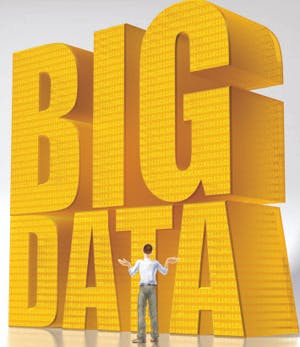Big data is coming into its own. The Harvard Business Review blog published this excerpt of an article on “Big Data’s Management Revolution” saying, in part:
Big data has the potential to revolutionize management. Simply put, because of big data, managers can measure, and hence know, radically more about their businesses, and directly translate that knowledge into improved decision making and performance. Of course, companies such as Google and Amazon are already doing this. After all, we expect companies that were born digital to accomplish things that business executives could only dream of a generation ago. But in fact the use of big data has the potential to transform traditional businesses as well.”
While big data is indisputably valuable to leadership and organization decision making, there are three obvious challenges.
1. Challenges of Big Data
- Determining the data you should gather.
- Finding the appropriate mechanisms to gather the data you want.
- Analyzing the data you end up with.
These challenges are consistent across any big data program, whether your goal is to improve customer acquisition and retention, drive down costs in your supply chain, or – most relevant to me – inspire, engage, motivate and energize your employees.
2. Big Data and employee recognition
Numerous research sources show your human capital investment is in the range of 65-85 percent of your total investment as an organization. If you’re outlaying that much of your financial resources as business, it follows you will want to get the most possible return on that investment.
Equally numerous are the research studies showing that engaged employees not only work harder, but deliver more results directly related to the goals of the organization. Traditional employee data gathering systems (think the annual review, annual engagement surveys and the like) are insufficient for getting the Big Data information you need to drive true competitive advantage.
With strategic, social employee recognition, you can solve all of the challenges of Big Data relative to your employee investment.
- Determining the Data – You don’t need to know how many of your employees are happy or satisfied. You need to know if they are living your corporate values while contributing to your strategic objectives. You need to know how they are doing this, when they do it well, and who does it best.
- Finding the mechanism – A strategic, social “everyone-to-everyone” recognition program is the ideal solution as it broadens the data generation to all employees in the organization, every day, and focuses it on your core values and strategic objectives.
- Analyzing the Data – This becomes easy through Talent Maps and infographics that show at a glance who is doing what you need them to do well in addition to uncovering the pockets where this is not happening. Now you can quickly intervene.
3. Recognition program design elements
What are the key recognition program design elements for uncovering Big Data relative to your talent?
- Broad reach – You must target 80-90 percent of your employees for recognition. You cannot focus on just your top 10% of high performers and expect to generate this kind of big data
- Frequency – You must encourage frequent and timely recognition of employees when they demonstrate a value or achieve an objective. Annual feedback isn’t enough to generate big data.
- Specific and detailed – You must require specific, detailed messages of recognition to ensure you’re gathering the full nature of what is being recognized and why. Without the details, you can’t analyze your culture at work or the impact on your employees.
Do you apply Big Data to your human capital investment?
You can find more from Derek Irvine on his Recognize This! blog.
